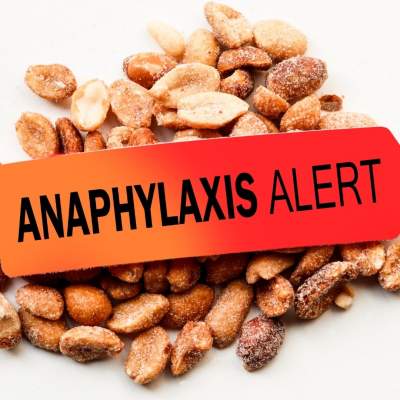What is Food Allergy
When the immune system of an individual reacts to proteins in food as if the protein is a harmful pathogen like a virus or bacteria, people usually react with a food allergy. In countries like the US, food allergies affect about 4% of adults and 5% of children.
Over the years, the number of people with food allergies has largely increased. For example, those having Peanut Allergies in North America has doubled over the last 10 years.
Although most allergies develop during childhood, most children tend to grow out of them. There are rare cases where allergies develop during adulthood.
Symptoms of Food Allergies:
Every individual’s body tends to react to food differently. Symptoms for different people can range from mild to severe ones. Not everyone experiences every symptom, but there are a few which are very common. A few allergic symptoms people could have are:
- A rash on the skin (hives)
- Itchy throat
- Facial swelling (lips or throat)
- Nausea or vomiting
- Diarrhea
- Runny nose
Anaphylaxis:
Anaphylaxis is a very severe allergic reaction. It happens as soon as a person is exposed to the food they are allergic to, but it takes a few hours to develop. Sometimes it could even lead to an anaphylactic shock.
Some symptoms people get for this include:
- Itchy throat
- Nausea
- Rapid fall in blood pressure
- Very fast heartbeat
- Vomiting
- Sneezing
- Swelling of face – mouth, throat, and lips
- Loss of consciousness
Some Common Foods People Have Allergies To…
- Milk
- Nuts – peanuts, groundnuts, walnuts, cashews, pistachios, and hazelnuts
- Fish
- Shellfish – lobster, crabs, shrimp
- Wheat
- Soybeans
In America, Milk, Eggs, and Peanut allergies are the most common among children, but though most children outgrow their milk, eggs, wheat, and soy allergies only about 25% outgrow a peanut allergy.
In Europe, sesame, lupin, mustard, and celery are the most common food allergens that people have.
Diagnosis:
How do you know if you have an allergy to a certain food? To get diagnosed, you should go to a doctor. The Doctor will ask you several questions to try and find out what exactly it is that you are allergic to. Some questions they will need answers to include:
- What symptoms you have had
- How long it takes for your body to react
- What foods could be the cause
- Where you have eaten the food
- If you have any family history of allergies
The doctor will probably then do one or more of the following tests to diagnose the allergy:
- A Blood Test: To detect any antibodies from food proteins that can indicate an allergy.
- Skin Prick Test: Diluted foods are put on a person’s arm and then the skin is lightly pierced. If the skin reacts in any way – swelling, itching or it turns red, the person may have an allergy. But this test should be repeated a few times for an accurate diagnosis.
- Maintaining a Food Diary: The person will have to write down everything they eat and if they have any symptoms after it.
Elimination Diet:
What is an Elimination Diet?
An elimination diet is a short-term diet where you stop eating foods that you feel your body can’t tolerate. Later, one by one each food is reintroduced into the diet again to see if any symptoms come up. This diet is done for about 5-6 weeks to help people with food allergies find out which foods contribute to their symptoms. Common symptoms that are removed are gas, diarrhea, nausea, bloating, and constipation. After you find out which foods you are allergic to (the ones your body can’t tolerate), you can remove them from your diet to prevent getting more symptoms due to their consumption.
There are many kinds of elimination diets – they either involve eating or refraining from certain types of foods.
An elimination diet must only be done under the supervision of a doctor because once you try to reintroduce the food causing the allergy, it could lead to anaphylaxis.
The diet has two phases – The Elimination Phase and The Reintroduction Phase.
THE ELIMINATION PHASE
During the elimination phase, you stop consuming foods that you feel affect you and trigger symptoms of an allergy. This is done for about 2-3 weeks.
You must determine whether it is due to these foods that you have uncomfortable symptoms.
THE REINTRODUCTION PHASE:
During the reintroduction phase, you have to slowly bring back into your diet the foods you previously eliminated. But reintroduce the foods into your diet gradually over a week and keep checking for any symptoms that occur. Some symptoms that you could get are:
- Joint pain
- Headache / Migraine
- Fatigue
- Rashes
- Bloating
- Stomach Pain
If you do not have any symptoms after reintroducing foods from one food group, you can continue eating foods from the next food group.
Some Foods To Refrain From:
- Beverages
- Sugar and sweets
- Fats
- Dairy Products
- Meat and Fish
Some Foods to Eat:
- Fruits and Vegetables
- Grains
- Dairy substitutes






